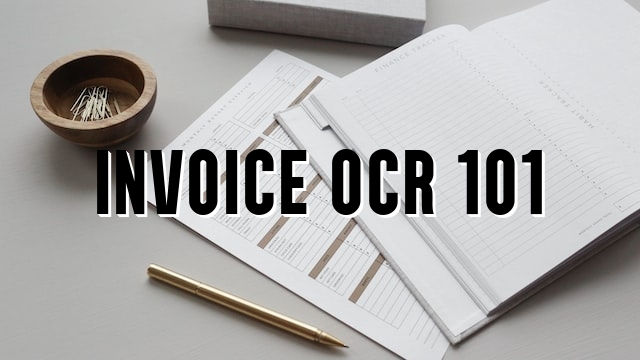A perfectly organized accounts payable department is a dream of every company. In that scenario, cash flow is smooth and optimized, and invoices are processed without a hiccup. Vendors are paid in time, and data is structured in a way that enables smart and informed financial decisions.
Traditionally, it would take a team of seasoned accounts payable experts that work well together to make this happen. Today is not so different, but these experts can make their jobs easier by using automation software.
Automation is the buzzword in financial circles and not without a good reason. Good, accurate, and reliable automation of menial tasks can dramatically improve efficiency.
To master automation, it is essential to understand the tasks at hand to a great detail. That is why this comprehensive guide will cover all the bases: what accounts payable department is and isn’t, which roles should be covered in such a department, and how to improve the traditional accounts payable processes.
Key takeaways include:
- Accounts payable refers to a company's unpaid financial obligations to vendors and suppliers, crucial for proper financial management.
- A well-structured accounts payable department is essential for managing debts, preventing fraudulent invoices and ensuring accurate financial reporting.
- Accounts payable expenses include rent, utilities, office supplies and professional services, listed under current liabilities on the balance sheet.
- An efficient accounts payable department for smaller businesses almost always needs to be automated.
- Roles and responsibilities within the accounts payable department vary, from clerks to managers, each requiring specific qualifications and skills.
Accounts payable: definition and the basics
Accounts payable deals with all the received but unpaid financial obligations a company has. These financial obligations are towards the company’s vendors and suppliers. Knowing what a company owes at any given moment is essential for any successful business. Proper management of accounts payable helps prevent fraudulent invoices and ensures accurate financial reporting.
When you observe the balance sheet, accounts payable are listed on the right-side of it under the heading of current liabilities.
Examples of accounts payable expenses include:
- Rent
- Utilities
- Office supplies
- Legal fees
- Raw materials
- License fees
Besides these basic descriptions and definitions about accounts payable departments, there are also some differentiating factors to be considered.
Accounts payable vs accounts receivable
The key difference between accounts receivable and accounts payable is that the former refers to money owed to a business by its customers, while the latter is money a company owes to its vendors or suppliers. Accounts receivable is considered an asset as it generates cash flow for the organization.
Accounts payable: credit vs debit
Accounts payable serves as both a credit and a debit in a company's financial records. When handling invoices, the accounts payable team initially records them as a credit in the general ledger. Then, they record them as a debit in the expense account.
This practice aligns with the double-entry bookkeeping and accrual accounting principles. It means that financial professionals record both revenues and expenses in the same period, even before the actual payment occurs.
Accounts payable and liability
Another frequent question is whether accounts payable a liability. The straightforward answer is – yes. Since they are debts your company owes to its vendors, that makes them liabilities and they are recorded as liabilities on the balance sheet. More precisely, accounts payable are current liabilities because the payment is expected within 12 months.
Accounts payable vs business expenses
The main difference is that the accounts payable are recorded on the balance sheet, while the expenses are reported on the income statement. That means that accounts payable and business expenses are not the same. Accounts payable are obligations toward vendors, creditors, and suppliers, while business expenses are costs of business operations.
The structure of an accounts payable department
A well-functioning, efficient accounts payable department guarantees punctual payments, accurate financial reports, and builds solid relationships with vendors. Its responsibilities encompass invoice processing and payment execution.
Due to their limited number of personnel, smaller businesses are unable to divide duties to the same degree as larger, more established companies, which may affect their accounts payable department structure. Implementing automated accounts payable processes can help smaller businesses improve efficiency and reduce the risk of errors.
Dividing tasks among those handling the upstream and downstream aspects of the P2P cycle can mitigate risk in your department. This division of tasks maintains departmental accountability, fostering a more secure system. Investing in automation tools while implementing rigorous internal controls, such as verifying sales tax exemption certificates, can further bolster confidence and provide peace of mind for management.
Roles and responsibilities
The different accounts payable job titles within an accounts payable department include:
- Clerk or officer
- Specialist
- Manager
- Supervisor
- Analyst
Each role has its unique responsibilities, ranging from processing invoices to managing the entire accounts payable department.
Some common qualifications for these roles include:
- Robust computation skills
- Leadership aptitudes
- Written and verbal communication skills
- Problem-solving skills
- Familiarity with budget creation and finance management
The interactions between these roles enable the seamless flow of payments and the effective management of accounts payable.
Separation of duties and fraud prevention
The segregation of duties and responsibilities within an accounts payable department is a key strategy for mitigating fraud risk and maintaining robust internal controls. Delineating the responsibilities of those engaged in the upstream and downstream aspects of the P2P cycle is an effective approach to organizing your department to reduce risk.
Certain tasks, such as processing payments for child travel and business expense reports, as well as payments for purchasing cards, credit cards, or debit cards, should be delegated to personnel outside of the Accounts Payable department to further strengthen internal controls and minimize fraud risks.
The accounts payable process: from invoice to payment
The three main steps involved in the AP process are acquisition, acceptance, and billing. When going into more detail and breaking down these three steps, you will find other responsibilities, as well. These include:
- Master vendor file: keeping this file up to date is essential for any company. It should include all necessary data about all vendors.
- Managing vendor invoices: this includes receiving, coding and uploading invoices into the accounts payable system. These invoices must also be verified and matched. An efficient accounts payable automation system is of great value in this step.
- Approval and processing: invoices need to be approved and processed. The accounts payable department is responsible for ensuring this process goes smoothly and efficiently.
The bill assists in monitoring the amount of goods received. Due to the value and volume of transactions occurring during any given period, concrete guidelines are essential in the accounts payable process.
Invoice verification and approval
The customary procedure for invoice verification in accounts payable involves:
- Examining the invoice details against the purchase order
- Confirming the billing date, particulars, costs and terms of payment
- Correlating the items listed in the invoice with the purchase order
- Noting any discrepancies or mistakes
- Approving the invoice for payment
- Executing the final payment to the vendor
Discrepancies can be identified during the invoice verification process by:
- Thoroughly reviewing the invoice and comparing it to the original order form
- Carefully scrutinizing the documents for errors, omissions or inconsistencies
- Running an invoice number check in the ‘paid invoices’ logs to clarify any discrepancies
- Double-checking the invoices to prevent invoicing errors
Payment scheduling and execution
The steps involved in payment scheduling and execution in accounts payable generally involve:
- Receiving the invoice from the vendor
- Verifying the accuracy of the invoice
- Approving the invoice or identifying any discrepancies
- Processing the final payment
- Scheduling the payment to the vendor
- Issuing the payment within a specified timeframe
- Disbursing payments
These steps guarantee timely and precise disbursements to suppliers and vendors.
The payment scheduling in accounts payable is determined by taking into account the following factors:
- Average collection period
- Early payment programs
- Days payable outstanding (DPO)
- Supplier payment times
- Cash flow factors
- Optimization of payment timing
Enhancing efficiency with accounts payable automation software
In the era of the AI revolution, it is only logical to look for an AI-based Accounts Payable solutions. However, there are some concerns to automating such a crucial and delicate process in the finance department. That is why it is a great idea to streamline processes that are menial, repetitive, and don’t require too much of a professional input.
Among others, account payable automatizations can include:
- Invoice data extraction
- Document splitting
- Data verification
Automating such tasks can significantly improve AP efficiency by cutting down the time usually spent doing manual tasks. Given that AI uses deep learning, computer vision, and other cutting-edge technologies to understand and extract data from documents, better than humans, these tools can also reduce error margins.
Reducing errors, saving time, delegating experts with more important tasks that require human judgement scan help streamline the AP process.
Key Features of AP Automation Software
The key features of accounts payable automation software encompass seamless integration with accounting software, scalability, and the capacity to reduce or eliminate manual processing. When looking into an AP scanning software, you should look for these following features.
Machine learning and AI basis
AI is making revolutionary advancements in processing documents – especially invoices in different formats. Machine learning ensures that these tools are constantly improving, learning from every document they process.
Accurate data extraction
Your accounts payable automation software is only as valuable as it is accurate. You need a tool that can capture the necessary invoice data. If your business gets a large number of different types of invoices, it is best to opt for a trainable model.
Integration capabilities
Every automation tool needs to be easily integrated with all downstream data solutions. For that to happen, invoice extraction tools needs to include data validation capabilties, structuring data, as well as data export in different formats.
Scalability
AP automation tool that cannot handle your business growth will become outdated and need replacement. That would render all the investment you’ve made in it useless. That is why you need to factor in the scalability of its model from the start.
Security and compliance
Given that your AP automation tool would have to process a lot of sensitive information, it is crucial that it meets the highest security standards. Depending on your location GDPR or HIPAA compliance might be necessary. Additionally, ISO compliance is always a welcome feature.
Responsive customer support
Even with the most advanced and the most perfected automation tools, it is necessary to have customer support that’s responsive and efficient. Answering simple FAQs is not the customer support you should be satisfied with. They should be able to solve your specific issues and accommodate your business needs.
Time and money investment
If you are to introduce an automated AP solution into your process, you need to make sure that it saves time, money, and resources. Calculate precisely how much savings it can provide for you, while taking the price of the tool into account.
Implementing AP Automation in Your Business
To implement AP automation software in a business, assess the current AP processes and needs, construct a business case for AP automation, secure stakeholder buy-in to the business case, specify and document the exact requirements, select a platform or vendor for the automation software and involve all pertinent stakeholders in the implementation process.
The steps necessary to implement AP automation software in a business are as follows:
- Establish and configure the AP automation software
- Instruct employees on how to use the software effectively
- Monitor and assess the effectiveness of the automation software
Building a high-performing accounts payable team
A strong candidate for the accounts payable team should have excellent communication skills and a solid accounting background, enabling them to collaborate effectively within the organization and nurture crucial vendor relationships.
Ongoing training and professional development is essential to guarantee that the accounts payable team is aware of the recent industry trends and optimal methods.
Examining data in the accounts payable department can indicate potential cost reductions.
Essential skills and qualifications
Accounts payable professionals should possess the following key skills and qualifications:
- Meticulous attention to detail
- Strong organizational skills
- Effective communication abilities
- Proficiency in accounting software
A high school diploma or GED certificate is the minimum requirement for an accounts payable professional, but many employers prefer applicants who possess a bachelor’s degree in finance, accounting, or a related field.
Attention to detail is essential in accounts payable roles to ensure accuracy in financial transactions and data entry. Proficiency in accounting software contributes to the performance of an accounts payable professional by automating tasks, saving time, and guaranteeing accurate results.
Ongoing training and professional development
It is of utmost importance that accounts payable team members remain apprised of industry trends and best practices to guarantee that the department functions optimally. Some effective methods for continuous professional development in the field of accounts payable include:
- Visualizing the AP process
- Standardizing workflows
- Implementing electronic payments
- Formulating comprehensive AP policies
- Engaging in ongoing education
It is suggested that accounts payable team members engage in professional development activities on a regular basis to remain abreast of industry trends and optimal practices. This could include participation in:
- Conferences
- Workshops
- Webinars
- Training sessions
It is recommended to set aside time for professional development activities at least once every quarter or as required based on the particular requirements of the team and the organization.
Accounts payable best practices for improved financial management
Effective management of accounts payable involves regular reconciliation and review, securing favorable payment terms with vendors, and enforcing robust internal controls. Frequent reconciliation and review of accounts payable transactions are necessary to maintain the accuracy of financial records and identify potential issues promptly.
Setting up advantageous payment terms with vendors can help guarantee that payments are rendered promptly and that vendors are remunerated in a timely fashion.
Sustaining strong internal controls is critical for thwarting fraud and guaranteeing the accuracy of accounts payable records. Establishing advantageous payment terms in business relationships has a number of advantages, such as:
- Enhanced cash flow
- Strengthened relationships
- Reduced confusion
- Augmented negotiating power
Regular reconciliation and review
Frequent reconciliation and review of accounts payable transactions are necessary to maintain the accuracy of financial records and identify potential issues promptly.
The steps involved in reviewing accounts payable transactions include:
- Constructing a chart of accounts
- Establishing vendor details
- Examining and entering bill details
- Examining and processing payment for invoices
- Acquiring approval for payment
- Arranging payments to vendors or suppliers
- Dispensing payments
Reconciliation and review in an accounts payable department should be conducted at least on a monthly basis. However, depending on the magnitude of activity, it may be essential to perform them on a daily or quarterly basis. Prioritizing accounts with the highest risk of error for reconciliation is essential to guarantee accuracy and promptly identify any potential issues.
Establishing favorable payment terms
The most favorable payment terms in accounts payable are those that provide a financial advantage to the company. These terms can include extended payment periods, discounts for early payment, or flexible payment schedules. Negotiating advantageous payment terms with suppliers can assist in enhancing cash flow and increasing efficiency.
In order to negotiate favorable payment terms with vendors, it is suggested to:
- Be reasonable in one’s ask while aiming for the higher end of what is needed
- Identify the person responsible for deciding payment terms and reach out directly to them
- Assess one’s bargaining power
- Research the supplier’s financial situation
Moreover, it is essential to clearly communicate one’s ideal payment terms and priorities. Moreover, it is advised to prioritize who one negotiates with and set payment arrangements early. Lastly, it is important to be honest, willing to compromise, and do one’s research. It is also recommended to be clear, concise, confident, and use positive and polite language during negotiations.
In conclusion, an efficient accounts payable department is vital for a business’s financial well-being. Building a high-performing AP team, implementing best practices, and adopting automation software can lead to more accurate financial records, stronger vendor relationships, and improved cash flow.
By following the guidance and insights shared in this blog post, you are well on your way to creating a winning accounts payable department that will support your business’s financial success.
Frequently asked questions
What is the accounts payable department responsible for?
The accounts payable department is responsible for ensuring proper approval and processing of invoices and payments, as well as keeping track of vendor expenditures to control expenses and maintain an accurate balance sheet.
How can accounts payable automation software improve my business's financial management?
Accounts payable automation software can improve your business's financial management by increasing efficiency, reducing errors, automating manual tasks, and providing greater visibility into your data.
What are the key roles within an accounts payable department?
The key roles within an accounts payable department include Accounts Payable Clerk, Specialist, Manager, Supervisor and Analyst.
How often should accounts payable transactions be reconciled and reviewed?
Accounts payable transactions should be reconciled and reviewed at least monthly, though daily or quarterly may be necessary depending on the amount of activity.












